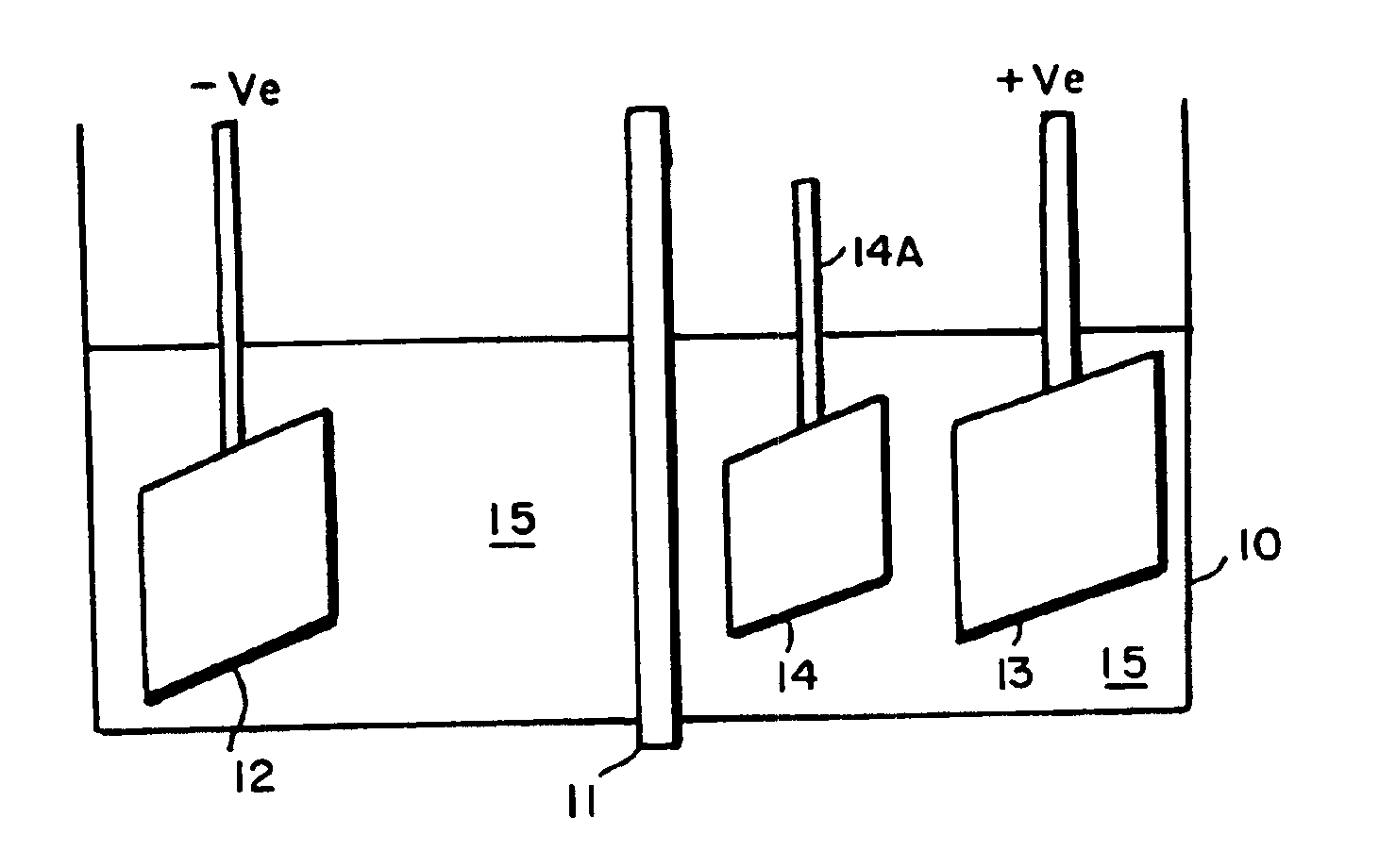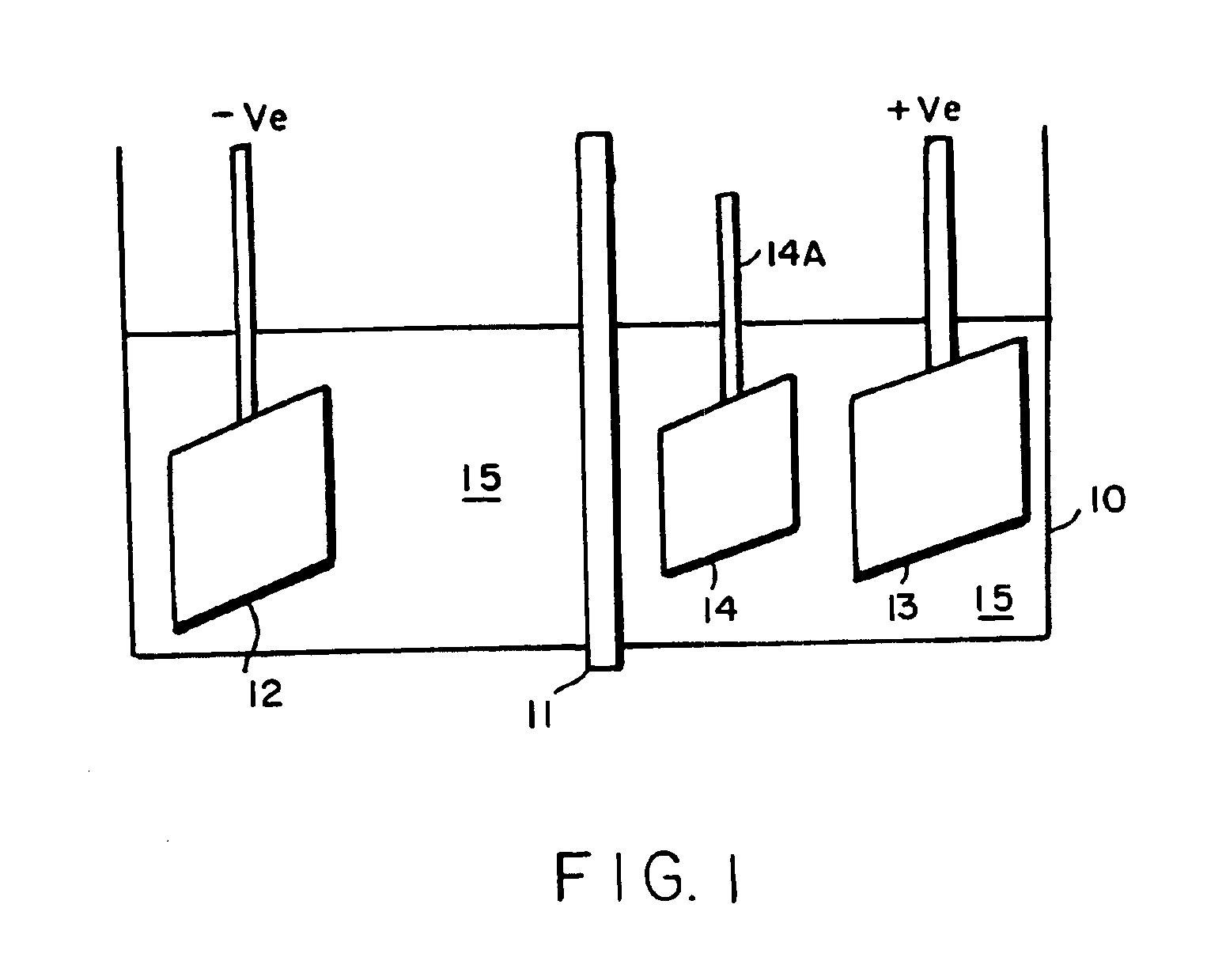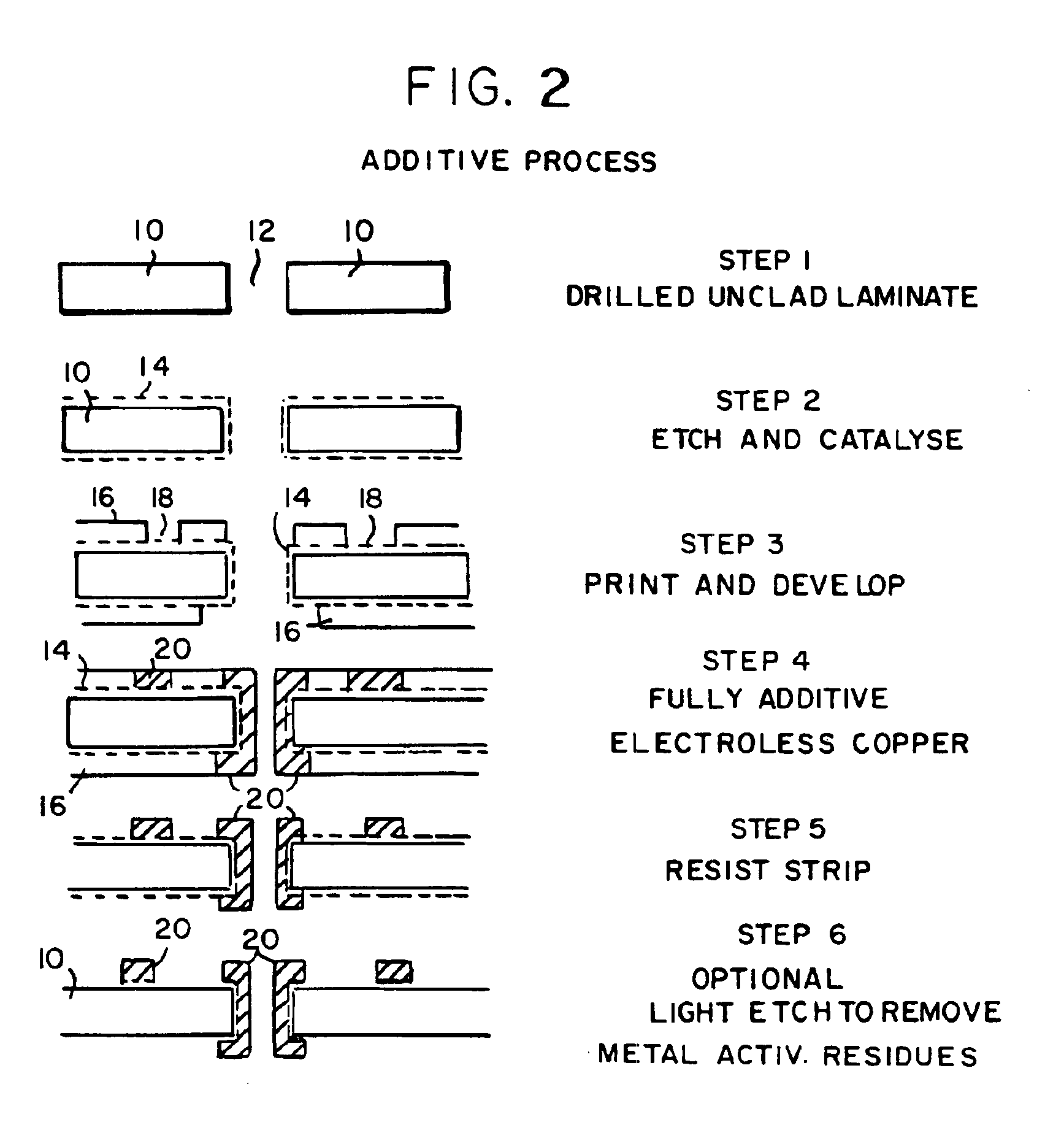Electroless plating processes
a technology of electroless plating and plating materials, applied in the direction of liquid/solution decomposition chemical coating, paper/cardboard articles, coatings, etc., can solve the problems of increasing environmental degradation and long process, and achieve the effects of promoting electroless plating, reducing waste treatment problems, and reducing chemical consumption
- Summary
- Abstract
- Description
- Claims
- Application Information
AI Technical Summary
Benefits of technology
Problems solved by technology
Method used
Image
Examples
example 1
Metallization of ABS
PROCESS STEPSMAKE-UPTEMP / ° C.TIME-MINS1. Apply PM 920 Con-180-250 ml / l381ditioner1 to ABS substrateRinse (cold water)22. Ag2+ Etch4M / l HNO3 +50141 M / l AgNO3i=0.5 A / cm2Rinse (cold water)23. Apply reducing agent5 g / l301Sodium borohydrideRinse (cold water)24. Plate with Cuposit 2514615Electroless Copper1Rinse (cold water)Room90Temperature5. Apply 10% H2SO4 dipRoom2Temperature6. Electroplate withRoom90Electroposit 1200 Copper1TemperatureRinse (cold water)RoomTemperature7. Bake70601Available from Shipley Company, L.L.C. of Marlboro, Massachusetts, United States of America
example 2
Metallization of ABS
TIME / PROCESS STEPSTEMP / ° C.MINS1. Apply PM920 Conditioner to ABS381substrateRinse (Cold Water)22. Ag2+ Etch (having a make-up the same5014as the Ag2+ etch of Example 1 above)Rinse (Cold Water)23. Apply 10 g / l Sodium Hypophosphite +25135 ml / l sodium hydroxidei=0.5 A / cm2Rinse (Cold Water)24. Plate with Cuposit 251 Electroless4615CopperRinse (Cold Water)25. Apply 10% H2SO4 dipRoom Temperature16. Electroplate with Electroposit 1200Room Temperature90CopperRinse (Cold Water)27. Bake7060
example 3
Metallization of FR4 Epoxy Circuit Board Substrate
TIME-PROCESS STEPSMAKE UPTEMP / ° C.MINS1. Apply Circuposit Hole200 ml / l7520prep4125 (Shipley) to FR42epoxyRinse (cold water)2. Ag2+ Etch4M / l HNO3 +25 or 5030 or 150.5M / l AgNO3i=0.39 A / cm2Rinse (cold water)23. Apply reducing agent20 g / l251Sodium borohydrideRinse (cold water)24. Plate with Cuposit 2514615Electroless Copper1Rinse (cold water)901Available from Shipley Company, L.L.C. of Marlboro, Massachusetts, United States of America
PUM
| Property | Measurement | Unit |
|---|---|---|
| Time | aaaaa | aaaaa |
| Adhesion strength | aaaaa | aaaaa |
| Metallic bond | aaaaa | aaaaa |
Abstract
Description
Claims
Application Information
 Login to View More
Login to View More - R&D
- Intellectual Property
- Life Sciences
- Materials
- Tech Scout
- Unparalleled Data Quality
- Higher Quality Content
- 60% Fewer Hallucinations
Browse by: Latest US Patents, China's latest patents, Technical Efficacy Thesaurus, Application Domain, Technology Topic, Popular Technical Reports.
© 2025 PatSnap. All rights reserved.Legal|Privacy policy|Modern Slavery Act Transparency Statement|Sitemap|About US| Contact US: help@patsnap.com



